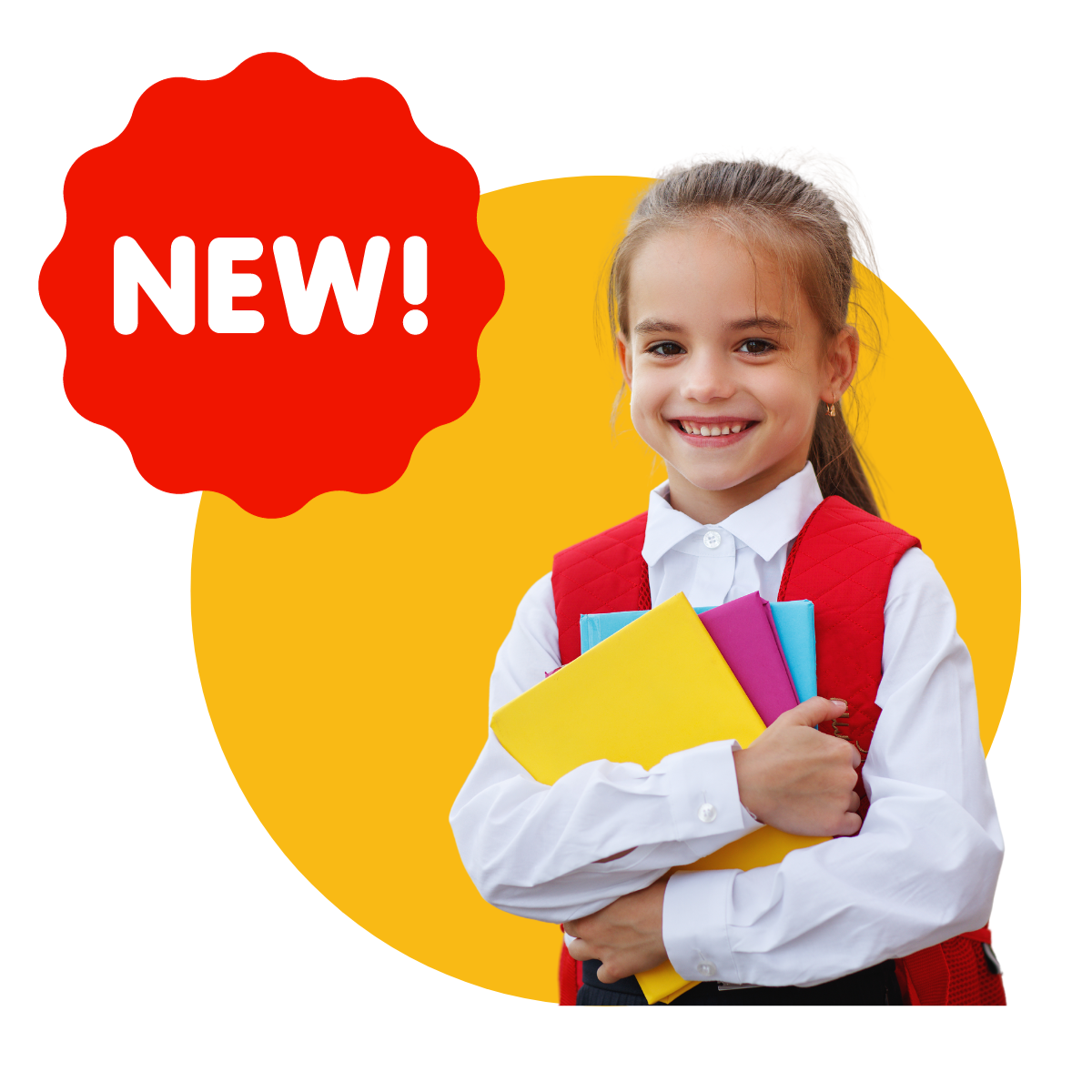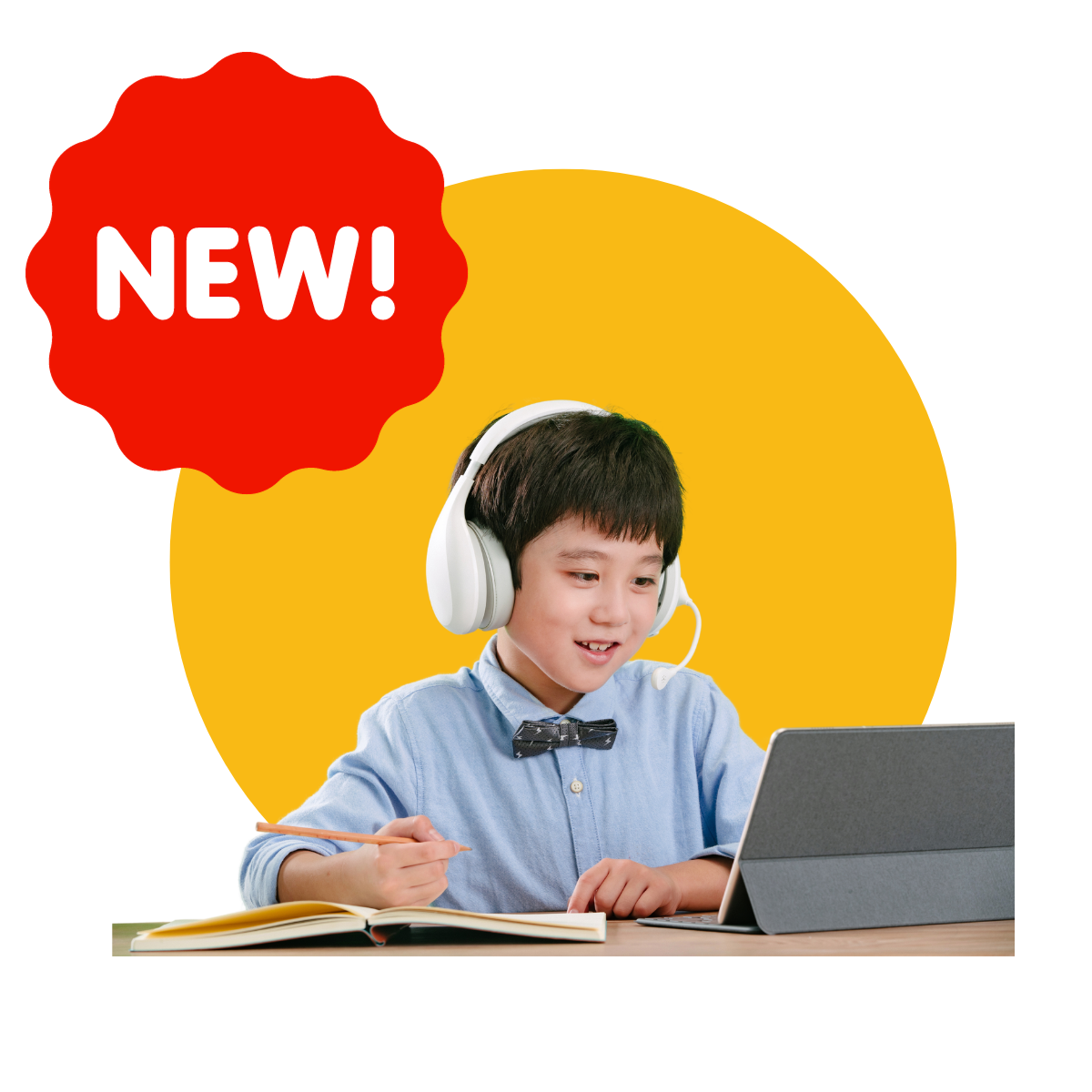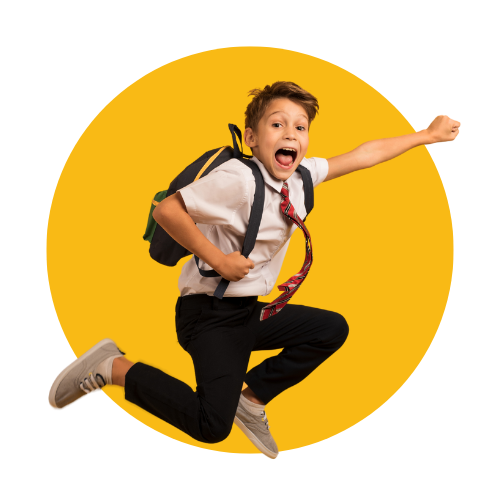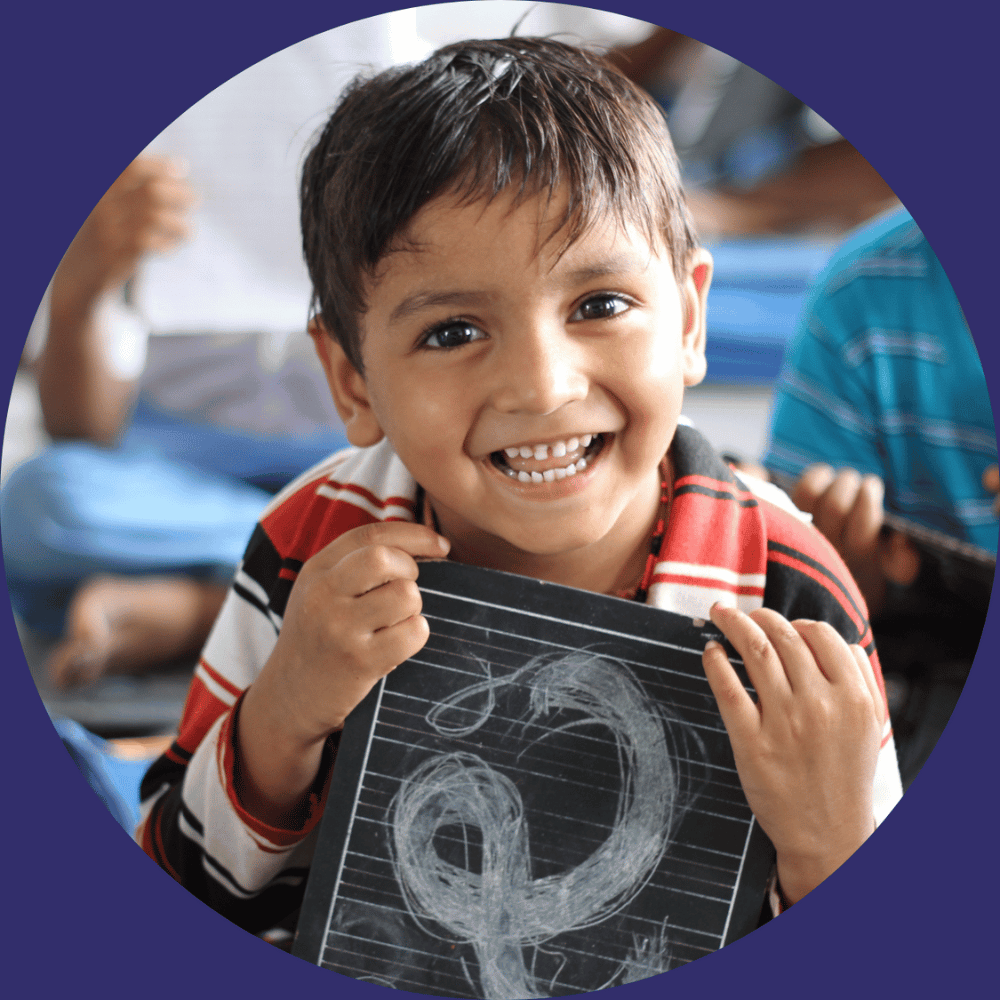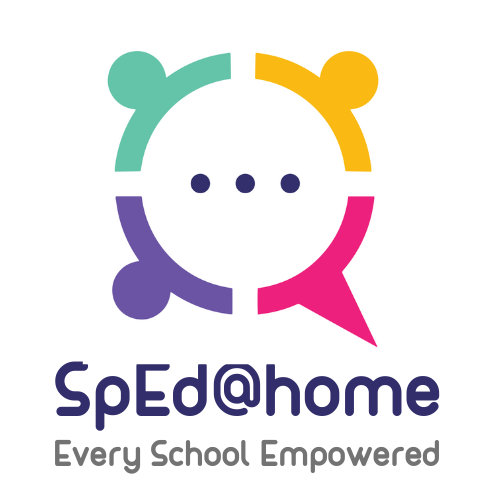Let’s decode the complicated jargon from the world of special education. As a front runner in the field of special education, we aim to simplify the process and access to acquiring information regarding special education. Here’s part 1!
1. SpEd@home
It is a proper noun and a portmanteau* of Special Education at Home. SpEd@home is an ed-tech company that aims to redefine the world of special education with innovative technologies and solution. Their tagline is – Every Child EnABLED.
Features
- India’s First Blended Learning Platform for children with special needs.
- Their services include
- Educational Assessment
- Occupational Therapy Assessment
- Occupational Therapy
- Remedial Therapy
- School Resource Room
(*portmanteau words are a blend of two or more words)
2. Special Education
Special education is an independent education method used to empower and enable children with differential needs. It uses systematic planning and arrangement of special courses and syllabus that helps children to overcome their disabilities or learning difficulties. As per National Education Policy 2020, every school needs to be equipped with all the resources and equipment to manage and educate special needs children. Schools needs to employ a certain number of special educators and also a dedicated resource room.
Alternate words – Aided education, Differential Education, Accommodated Education, etc.
3. Differential Needs
Children with learning difficulties, communication disorders, physical disabilities, are regarded as children with differential needs. Sometimes children may show intelligence at par with their peers, however, when it comes to academics, sports, to any other activities, their performance may show a different picture. They not only face difficulties with performing but also face tremendous challenges with learning the basics. Such children need therapy programs like Occupational Therapy and Remedial Therapy for their effective development.
Some Examples of Special Needs Children
- Autism
- ADHD
- Dyslexia
- Dysgraphia
- Dyspraxia
- Cognitive Disorders
- Socio-Emotional Disorders
Alternate words – Special needs, Exceptional needs.
4. Occupational Therapy
Some children are unable to perform the basic survival activities. They face difficulties in doing day-to-day tasks and need constant support and assistance. This inability can lead to various physical and emotional difficulties in life. These children have a tough academic and social life. This is where Occupational Therapy comes to play.
Occupation means the act of doing something, carrying out a task. And Therapy – a treatment intended to heal, improve, or channelize an ongoing situation. Occupational Therapy is the treatment to improve and heal one’s ability to do tasks.
Occupational Therapy can help children become independent and perform tasks on their own. Though the improvement can vary from individual to individual, it can still bring a positive change when done consistently.
5. Remedial Therapy
Remedial means the act helping or giving a remedy over a situation. It is aimed at improving or correcting a situation. And as we understood before, therapy is a treatment intended to improve or heal. and in combination, Remedial Therapy is aimed at helping children with learning difficulties. Remedial Therapy helps children improve their performance and achieve increased level of efficiency.
Attention Deficit-Hyperactivity Disorder ADHD is a common disorder observed in children, also in adults. It is a neurodevelopmental disorder that can make your child a tough cookie. Children with ADHD are overly active, inattentive, and constantly up with an disorganised energy. This adversely affects their ability to perform basic daily tasks.
Some quick facts about Attention Deficit-Hyperactivity Disorder (ADHD)
- It is observed that boys are more likely to have ADHD than girls.
- ADHD can’t be prevented.
- ADHD can’t be completely cured.
- Early intervention can help manage ADHD.
- ADHD was formerly known as ADD, the term hyperactivity was added to the mix as it was inferred to be an important aspect of the disorder as much as inattentiveness.
Children with ADHD find it difficult to be in one place. They are constantly fidgeting and may exhibit aggressive behaviour at times, making them quite a handful. However, this should not let the panic rockets off! ADHD may. Not be completely curable but can be managed with therapy, and activities.
Some symptoms of Attention Deficit-Hyperactivity Disorder (ADHD) as below.
- Constant fidgeting
- Restlessness
- Extreme Boredom
- Unable to sit calmly in one place for a long time
- Impatient
- Agression
- Highly impulsive
Here are some activities to help our handle your child with Attention Deficit-Hyperactivity Disorder (ADHD).
Yoga!
Yoga is one of the best(est) ways to bring in the control. Yoga has proved helpful when it comes to improving focus and attention. It also helps channelize energy with slow body movements and rhythmic breathing.
Breathing Exercises
ADHD can adversely affect breathing rhythm. Deep breathing techniques are important for children with ADHD. A dedicated routine of breathing exercises can help balance the nervous system. It can help in relaxing and improve attention span.
Listening to soft music
Listening to soft music can help your child relax and focus. Soft instrumentals, sounds of nature, or relaxing background music, all these can focus and improve attention. However, listening to something on loop isn’t the best idea, keep updating the playlist.
Outdoor games
Children with ADHD need a good dose of physical exercise as much as they need activities to calm them down. Outdoor games are best when it comes to utilising all the extra energy and hyperactivity. A good run on the track, a game of cricket – tennis – football, will tire them soon, effectively.
Helping in house chores!
Just get your babies to clean their room. Reward them with appreciation when they are done. Organising helps in decluttering the mind and helps focus.
Occupational Therapy Vs Remedial Therapy: Before committing your child to therapy, it is essential to understand which one is best suited for them. Today, we are going to take you through the benefits of Occupational and Remedial therapies to help you make the right choice. Both are unique kinds of intervention meant to assist in different areas of development. Sometimes used independently, and also in combination to derive the best results.
Let’s start by understanding what is Occupational Therapy. Occupational Therapy helps people do things through use of daily activities or occupations, throughout their lives. Occupational therapists help support people from all age-groups to live wholesome lives while overcoming challenges like injuries, illnesses, or difficulties.
Occupational Therapy Vs Remedial Therapy
Remedial Therapy is a multi-factor approach revolving around one-to-one instructions, written and verbal work, and virtual assignments that focus on skill-development. It uses behavioral teaching techniques, and instructions to enhance the foundational skills, literacy and numeracy, of a child.
Occupational Therapy is designed for those children/adults with physical, sensory, and cognitive disabilities like ADHD, Autism, and Down Syndrome, to name a few. Typically, an Occupational Therapist evaluates if a child’s learning and playing abilities are appropriate for their age. If not, they designed a therapy plan that includes a varied set of activities that help the child’s development.
Remedial Therapy on the other hand, helps students with learning disabilities due to conditions like ADD, ADHD, Dyslexia, and Dyscalculia. A Remedial Therapist analyses a child’s performance and work on their learning abilities, cognitive flexibility, behavioral responses, hyperactivity, etc., with scientifically designed therapy sessions and activities.
Benefits of Occupational & Remedial Therapy
One of the most important benefits of Occupational Therapy is the improvement and enhancement of a child’s abilities to overcome difficulties. Occupational Therapy ensures that the child is comfortable at home by empowering their families with the required tools that help them manage the child’s triggers. Occupational Therapy also provides a secure environment for children struggling with simple chores of life.
Remedial Therapy helps children overcome learning disabilities and become better at skills like language, maths, etc., which leads to beter outcomes in the area of academics. This helps children bolster their confidence and socialize with their peers.
It is often observed that when learning disabilities are not detected in time, it leads to a feeling of dejection and hopelessness in children. This lack of achievement further aggravates and manifests into them getting labeled problematic, or lazy. Hence, it is very important that a child gets the support and attention that is required to thrive in their growing, impressionable years.
If you are looking for the right support for your child’s development, you are not alone. You can get your child assessed by experts who can then suggest the right therapy for your child. They can help with tailoring a customized plan specific to your child’s needs so they get the right kind of environment to grow, thrive, and excel in life. Every child is unique and with a little nudge, they can go places.
Dyslexia Vs Auditory Processing Disorder – Let’s understand!
Dyslexia Vs Auditory Processing Disorder. As commonly defined Dyslexia “is a brain-based type of learning disability that specifically impairs a person’s ability to read. These individuals typically read at levels significantly lower than expected despite having normal intelligence.”
As for Auditory Processing Disorder (APD), it is often described as an abnormality in the processing of sound in the central auditory nervous system. This causes a compromises the brain’s ability process sounds and language. Making it hard to distinguish small sound differences. Remembering and keeping up with ongoing speech is difficult. Especially when there is background noise or when more than one person is talking.”
Dyslexia Vs Auditory Processing Disorder – Similarities
Apparently, 70% of those with Dyslexia have also been found to have a range of APDs. In fact, recent research has even found that one out of four children tested for possible Learning Disabilities had both Dyslexia and APDs. There is currently a lot of debate in the scientific community over whether or not Dyslexia is a long-term consequence of APD. A study comparing children diagnosed with Dyslexia and APD has found virtually no differences between the two groups, while some even contend that such diagnoses depend upon the kind of specialists that are consulted. As a result of the above, many experts have even recommended using non-verbal auditory tests to diagnose APD separately, as opposed to the kind of intellectual and academic testing used in evaluating Dyslexia.
Dyslexia Vs Auditory Processing Disorder – Differences
Despite the similarities, Dyslexia and APD are still markedly distinct. These are some of the many major differences between the two:
- Those with APD, as the name itself might imply, mostly present difficulties in processing sound. On the other hand, children with Dyslexia find it difficult to process language itself – either verbally and/or when spelling and reading.
- Accordingly, children with APD may find it difficult to spell, read and even understand information that may be presented to them verbally. Dyslexic children face the exact same problems but for information presented in print.
- APD results in a difficulty in distinguishing between certain verbal sounds – for example, instead of “big” they may hear “pig”, and instead of “fees” they may hear “flees”. However, Dyslexic children may find it difficult to manipulate sounds in words whilst pronouncing them: for example – they might find it difficult to pronounce “pig” even though it’s only one letter different from “big”; same with “fees” and “fleas”.
Difficulty in recognising sounds
- Following from the previous point, children with APD face a lot of difficulty in recognising subtle differences between certain kinds of sounds. For example: they might find the short “i” and short “e” sounds to be similar when they’re actually not. Children with Dyslexia face difficulties with phonological processing. Particularly when it comes to longer words.
- APD is difficulty to understand stories that are told verbally, unless they are accompanied with illustrations and/or brief. Dyslexic children have an understanding of verbally-communicated stories.
- When children with APD misspell words, they tend to involve letter omissions or the usage of wrong sounds. Dyslexic children can phonetically pronounce correct spellings that are still wrong.
Dyslexia Vs Auditory Processing Disorder
Many of Dyslexia’s symptoms may overlap with APD. APD affected individuals are unable to hear correctly. This results in poor phonological awareness due to their central auditory nervous systems can’t even process the sounds.
For children with APD, functioning in a classroom environment is incredibly difficult due to the fact that typical classrooms function through verbal instructions from teachers. For a Dyslexic child, the right kind of verbal instructions might actually prove to be quite helpful.
What are the treatment methods for the two?
APD
The treatment of APD focuses on three areas:
- Development of higher skills to compensate for it
- Changing the environs in which they learn
- Remedial therapy for the deficit itself
Basic auditory processing tasks have been found to be quite successful in treating the condition as it increases phonemic awareness. Some successful methods include treating symptoms related to APD, such as the treatment of phonological disorders. Occupational Therapy can prove to be quite helpful for children with Dyslexia. Various kinds of dyslexia interventions exist in order to help children become aware of the relationships between letters and how they sound. In addition, reducing anxiety and stress has been found to have a positive effect on how Dyslexic children write.

